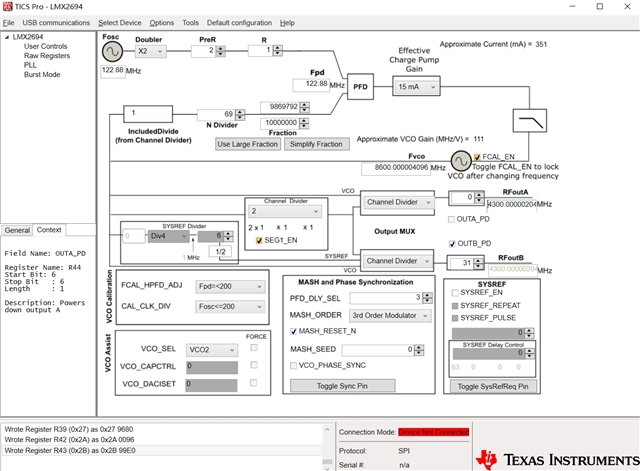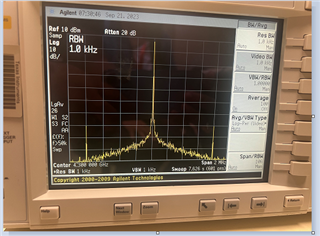Other Parts Discussed in Thread: PLLATINUMSIM-SW
Hi Team,
Using the LMX2694-EP chip to output signals, spurs were found on the near end of some of the band signals when testing the output of the 500-6000M band. For example, at 4300MHz, the spur is closest to the main signal. After checking the data, the customer found that it appeared to be the integer boundary spurs of the PLL, i.e. the phase frequency and its harmonics and output signal spurs, such as 112.88*35-4300=0.8M. Reducing the charge pump current improves spurs, but it would be better to keep them below 70dBc. According to the above calculations, the maximum spur should be around 122.88*n.
The following figure shows the output 4300M signal spectrum:

At 4300M, the configurations are as follows:

Could you help look into this case? Thanks.
Thanks and regards,
Cherry




